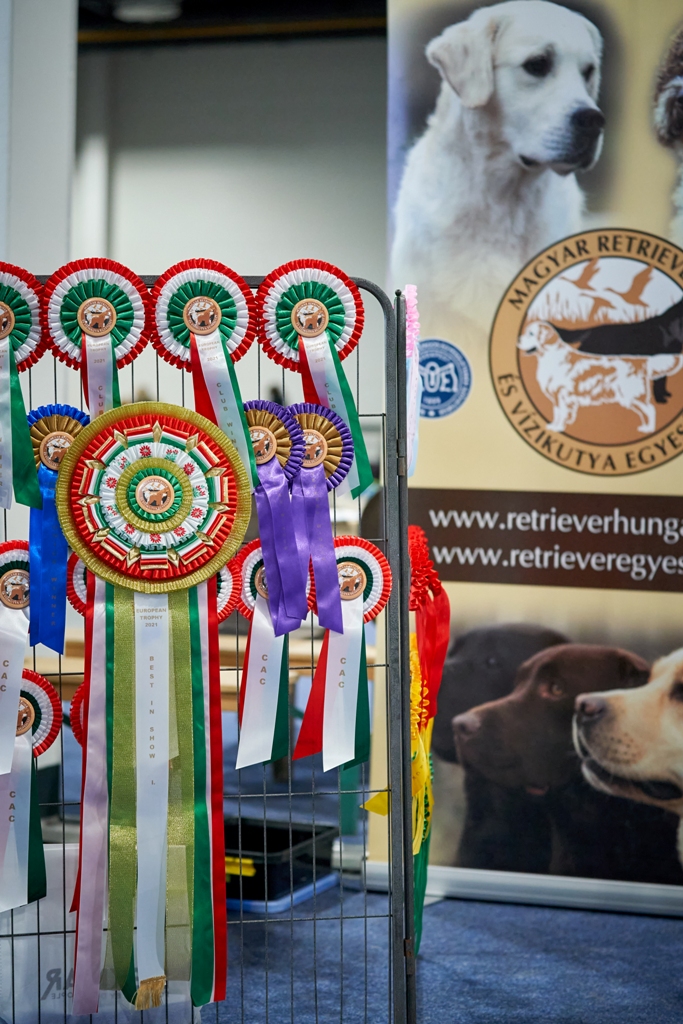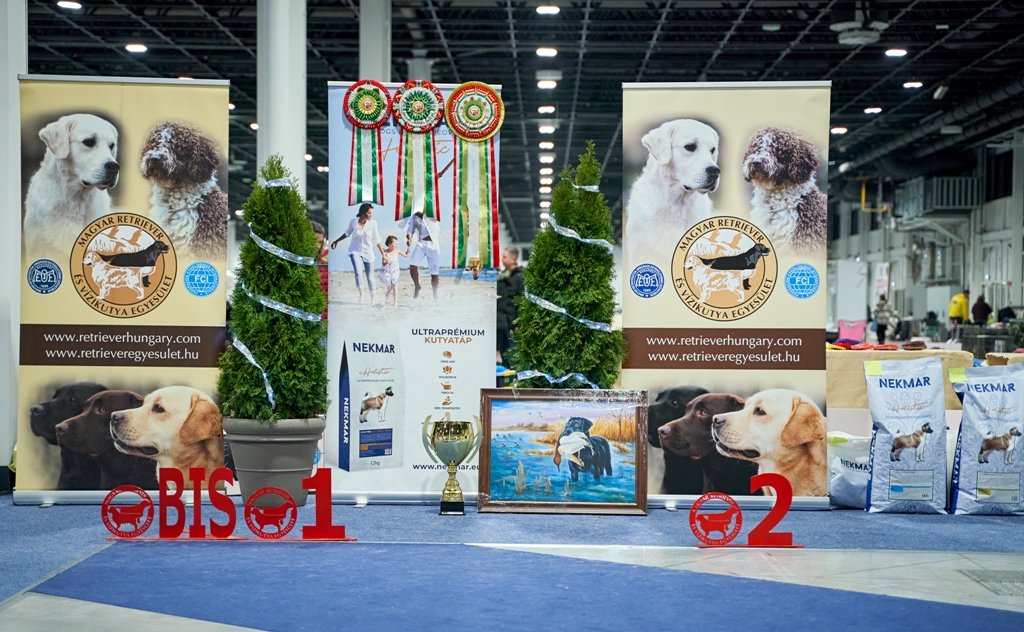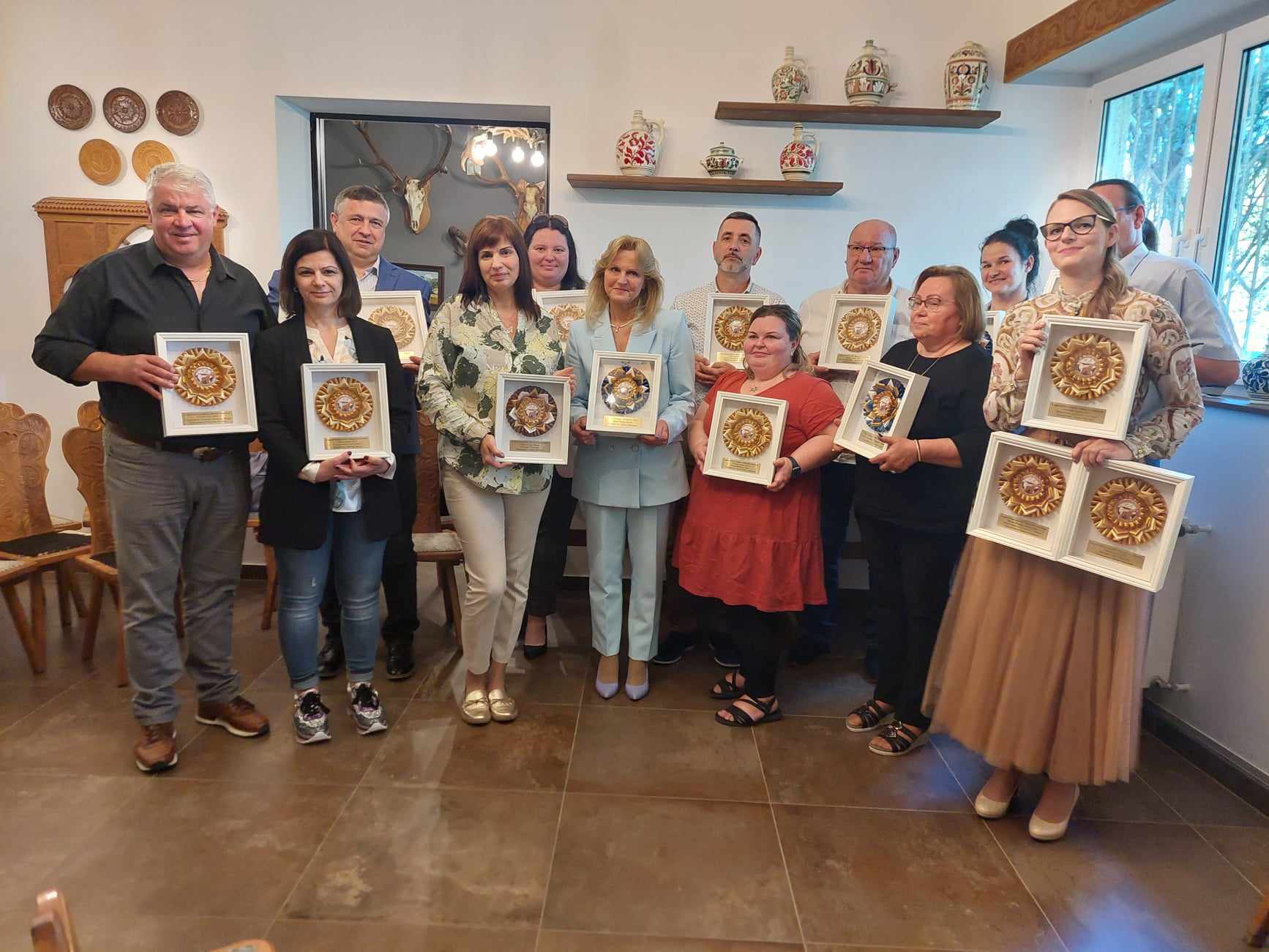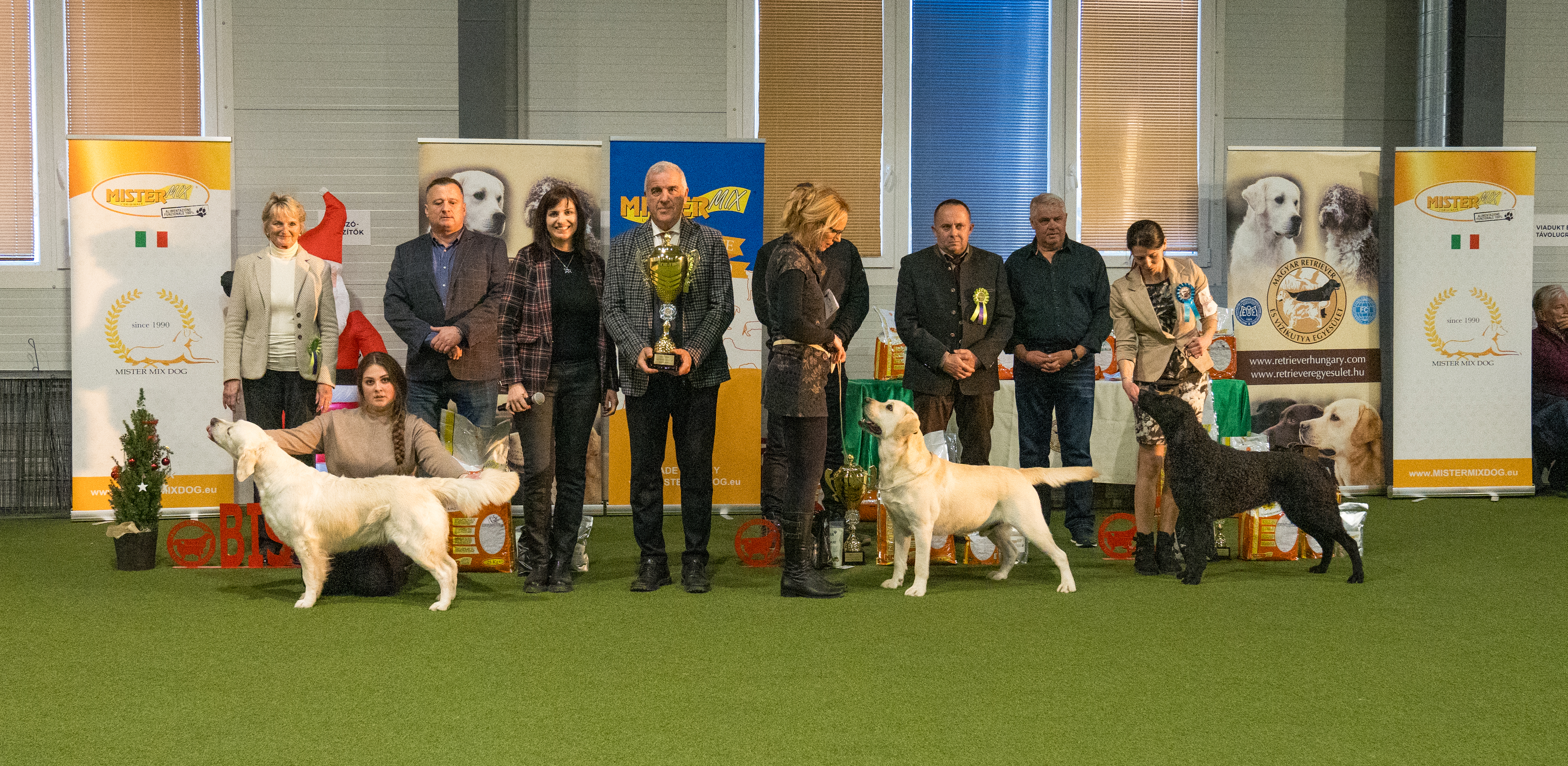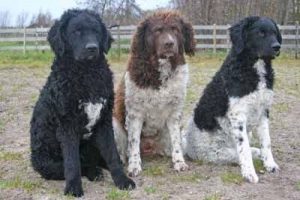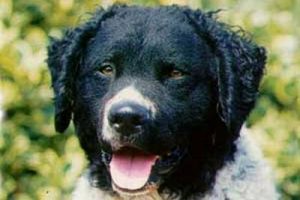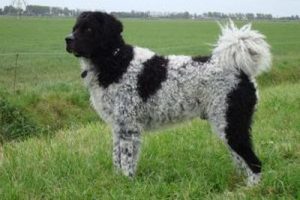SZÍN:
Egyszínű fekete vagy barna, valamint a fekete-fehér jegyekkel vagy a barna-fehér jegyekkel, miközben a fehér színben pöttyözés vagy márványosság előfordulhat.
LIMBS:
FOREQUARTERS:
Shoulders: Shoulder blade, well-laid against the chest; obliquely placed and well angulated.
Forearm: Powerful and straight. Pasterns : Straight, not obliquely set.
Fore feet : Round, toes well developed and arched, pads thick.
HINDQUARTERS:
Powerful, moderately angulated. Lower thigh : Not too long.
Hock joint: Placed low.
Rear pasterns : Short.
Hindfeet : Round with well developed pads.
SIZE:
Ideal size for dogs : 59 cm, for bitches : 55 cm
TAIL:
Long, carried as ring tail over or alongside the croup.
COAT:
HAIR : With the exception of the head and legs, the body is covered with tight curls consisting of firm, strong tufts of hair. Sparse curls or curls of thin hair tufts give the dog a woolly appearance, which must be considered a serious fault. The coat itself is rather coarse in texture and has a greasy touch.
COLOUR : Solid black or brown, or black with white markings, or brown with white markings. Ticking or roan in the white are permitted.
FAULTS:
Any departure from the foregoing points should be considered a fault and the seriousness with which the fault should be regarded should be in exact proportion to its degree and its effect upon the health and welfare of the dog.
DISQUALIFYING FAULTS:
- Aggressive or overly shy dogs.
- Any dog clearly showing physical of behavioural abnormalities shall be disqualified.
WETTERHOUN STANDARD
FCI-CLASSIFICATION:
- Group 8 Retrievers-Flushing Dogs – Water Dogs.
- Section 3 Water Dogs. With working trial.
GENERAL APPEARANCE:
A well balanced dog, traditionally used for otter hunting. A sturdy animal, but neither plump nor clumsy, square and thick set in overall build, with close fitting skin, free from throatiness or dewlap. Lips not pendulous.
BEHAVIOUR / TEMPERAMENT:
Quiet dog with stubborn character, reserved about strangers, an ideal guard-dog.
NECK:
Short, strong, round, merging into the topline in a very blunt angle, i.e. the head is mostly carried low. The neck slightly arched. No throatiness or dewlap.
BODY:
Very powerful. Back : Short and straight. Loin : Strong.
Croup : Only slightly sloping.
Chest : Wide, showing more width than depth, so that the forefeet are rather wide apart, rounded, not reaching lower than the elbow. Ribs well rounded and well developed towards the rear.
Underline and belly : Only moderately tucked up.
N.B.:
- Male animals should have two apparently normal testicles fully descended into the scrotum.
- Only functionally and clinically healthy dogs, with breed typical conformation should be used for breeding.
UTILIZATION:
Dog for otter hunting.
HEAD:
Dry, size in balance to the body, strong and powerful.
CRANIAL REGION:
Skull : Slightly rounded, giving the impression of being wider than long, gently sloping into the cheeks. Skull and muzzle of the same length.
Stop : The skull falls gently away into the foreface, stop only slightly indicated.
FACIAL REGION:
Nose: Well developed, not split. Black for dogs with black ground colour and brown for dogs with brown ground colour. Nostrils well developed and open.
Muzzle : Powerful, tapering slightly to the nose, not pointed, but truncated. Nasal bridge broad and straight, neither concave nor convex when viewed from the side.
Lips : Tightly fitting, not overhanging. Jaws/Teeth : Teeth powerful, scissor bite. Cheeks : Musculature moderately developed.
Eyes : Of medium size, oval, with tightly fitting lids, without showing the conjunctiva; placed slightly slanting, causing a somewhat grim expression. They are neither bulging nor deep-set. Colour dark-brown for dogs with a black ground colour, and brown for dogs with a brown ground colour. Bird of prey eyes are objectionable.
Leathers : Set rather low. The auricle is so little developed that ears hang flat along the head without any break. Objectionable are strongly developed auricles with the break not immediately at the set on, but further down causing the ear lobe not to hang close to the head. The ears are moderately long and have the form of a mason’s trowel. The coating of the ear is a typical characteristic of the breed. It is curled, rather long at the set-on of the ear, decreasing in length to the lower 1/3 part where the ear is covered with short hair.




